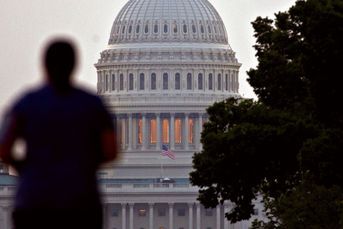How much did adviser groups contribute to congressional campaigns?
It depends on what slice of the industry they represent.
As the primary season winds down and attention turns to the fall elections, financial advice organizations are on pace once again to make modest political contributions.
Groups that represent larger portions of the financial industry, as well as the insurance sector, are spending more heavily on races than financial planning groups.
So far in this election cycle, which began in January 2013 and will end in December of this year, the Investment Adviser Association, which represents registered investment advisers, has contributed $25,000 to House and Senate campaigns. That compares to $25,000 for the entire 2012 election cycle, according to the Federal Election Commission.
The Financial Planning Association has contributed $12,000 so far to 2014 campaigns, after donating $74,450 in 2012.
The FPA’s contributions will rise following a political fundraiser it is hosting associated with its first-ever advocacy day on Capitol Hill on June 24.
“You’ll see a big uptick in our numbers, as we meet legislators,” said Karen Nystrom, the FPA’s director of advocacy.
The Financial Services Institute Inc., which primarily represents independent broker-dealers, has donated $167,000 to 2014 races. In 2012, it contributed a total of $168,000. The Insured Retirement Institute has donated $72,300 to campaigns in 2014, while contributing $59,000 in 2012.
A group that represents both registered representatives and insurance agents, the National Association of Insurance and Financial Advisors, is spending significantly more than most other adviser groups, as it has in the past. It has donated $1.2 million to 2014 campaigns. In 2012, it spent $1.7 million on races.
Two organizations whose members span the financial industry also are spending heavily in support of campaigns. The Investment Company Institute, which represent mutual funds, has contributed $1.5 million to 2014 races, while the Securities Industry and Financial Markets Association, which represents wirehouses and large Wall Street institutions, has donated $552,500. In 2012, the organizations totaled $1.6 million and $609,500, respectively.
Campaign contributions from these organizations have to be made through their political action committees. Investment adviser groups are seeking to increase their Washington clout by encouraging their members to fund these mechanisms.
One obstacle for the Investment Adviser Association is that under campaign finance rules, its member firms can only authorize their employees to give to one interest-group PAC per calendar year.
“It’s a challenging election-law rdegulatory environment for us,” said Neil Simon, the IAA’s vice president for government relations. “But we are trying to engage our grassroots and politicize our members in order to grow our PAC.”
The FPA also is trying to bolster its PAC, according to Ms. Nystrom.
“We’re focusing new attention on it,” she said. “Already, we’ve seen a great increase in contributions over last year.”
Campaign spending is the other side of the lobbying coin. A campaign donation doesn’t guarantee a vote on an issue, but it can help groups obtain meetings with lawmakers.
“Our point of view is a good balance to what [lawmakers] are hearing from the insurance and wirehouse industries,” said Erica Feldblum, owner of EF Financial and an FPA member.
“Our PAC allows us to speak as loudly as possible for our 23,000 members,” Ms. Feldblum added.
The interest groups tend to be evenhanded when doling out campaign cash.
In the cycle so far, SIFMA has given 62% of its donations to Republicans and 38% to Democrats, according to the Center for Responsive Politics, a campaign-spending watchdog group.
NAIFA has a similar breakdown — 63% Republican and 37% Democrat. The IAA’s split is 55% Republican and 45% Democrat, while the FSI’s is just the opposite — 55% Democratic, 45% Republican. The FPA has contributed equally on both sides of the aisle.
Learn more about reprints and licensing for this article.








